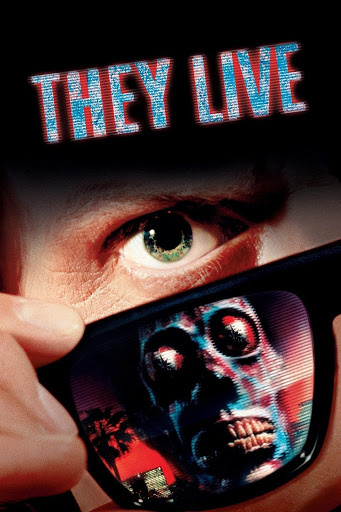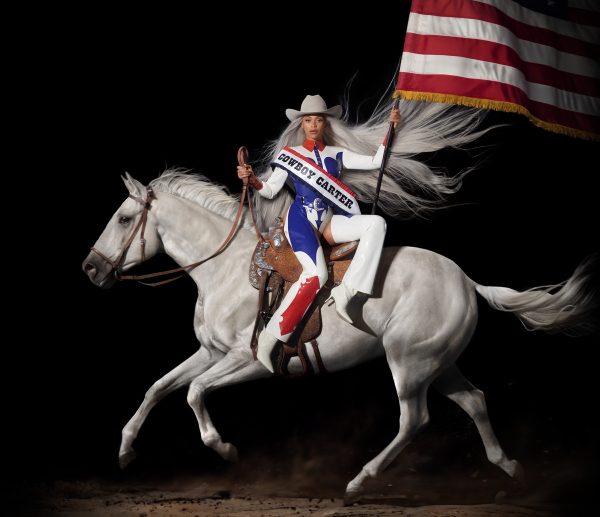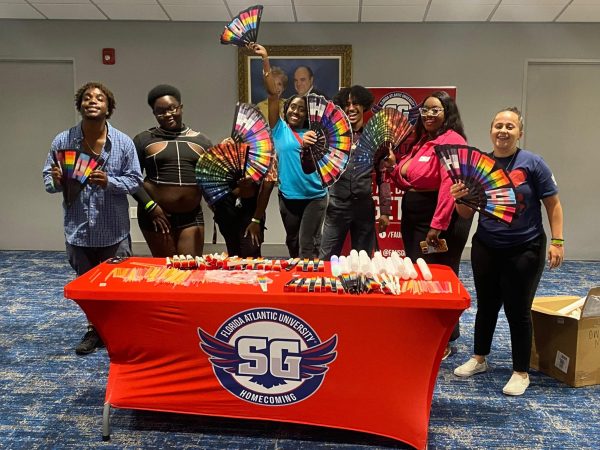REVIEW: Paranoia turns into a reality in John Carpenter’s “They Live”
Mullets, iconic one-liners, brainwashing aliens hiding among us. What more can anyone ask for out of an 80’s cult classic?

Courtesy of Alive Films and Larry Franco Productions
February 22, 2021
The American dream soon turns into an American nightmare for an unemployed drifter who quickly realizes that success is no longer obtainable for the lower working class. After a traumatizing encounter with the police at a homeless shelter, John Nada discovers the truth: That an alien race is masquerading among them as they plot for control of the Earth. The only thing that stands between them and total invasion is an unlikely friend and an odd pair of sunglasses.
Based on a 1963 short story titled “Eight O’Clock in the Morning” by Ray Nelson, “They Live” (1988) is an Action/Thriller directed by John Carpenter whose previous films include “Halloween” (1978) and “The Thing” (1982).
Roddy Piper plays John Nada, a down-on-his-luck average joe, who struggles to find employment in Los Angeles. While working on a construction site, Nada encounters Frank (Keith David) who tells him of a homeless shelter where he can stay the night. It isn’t long until the two of them undergo a brutal encounter with the police who ruthlessly demolish the shelter.
Nada discovers an unusual pair of sunglasses from a nearby church that shows the wearer imperceptible messages on every advertisement. Soon his world flips itself on its head as he realizes that aliens have already invaded and are disguising themselves among us to manipulate the masses.
In his anger, Nada goes on a shooting spree, killing every alien he can find. After fleeing his crime scene, he encounters Holly (Meg Foster) who heavily doubts Nada’s conspiracy theory. With the help of Frank, it becomes clear that it’s up to them to expose the truth to save mankind.
The film serves as a heeding caution that accurately depicts the struggle of the working class, versus the elite. We see the firsthand experience of what Nada’s homeless life is like as he drifts into town struggling for work. Nada finds himself begging for work at a construction site and later on sleeping outside in a homeless shelter. Piper brilliantly shines in this role as his character who isn’t this gun-toting muscular commando but rather a drifter struggling day-to-day.
There’s this underlying sense of rage against the world in his performance as it becomes apparent that Piper and Nada are indubitably one and the same. It also helps with the fact that Piper was a pro-wrestler before the film and helped create infamous one-liners such as “I have come here to chew bubblegum and kick ass… and I’m all out of bubblegum.”
David’s role as Frank also plays off Piper’s performance brilliantly as he helps to serve as this antagonistic foil to Nada’s delusions of this tall tale of invaders from the beyond.
While the film does struggle a bit in finding itself through the first half, it immediately picks up midway as it becomes this never-ending rollercoaster ride of tension. It becomes even harsher upon realizing how there is no clear-cut victory in sight for our two unlikely heroes, as they are endlessly pursued by creatures disguised as police.
This harsh fictional world that’s all too similar to our own becomes even more horrifying when Nada wears the sunglasses for the first time. Upon viewing the film, audiences will understandably be caught off guard with a sense of uneasiness during certain sequences that feature the black and white scenes.
These scenes that once showed brightly colored posters and advertisements that are plastered throughout the film immediately become off-putting once Nada puts on the sunglasses.
The magazines and billboards across Los Angeles scream out “OBEY” in bold font along with other brainwashing messages. Newscasts and commercials show these creatures with skinless facial features and eyes that pop out of their skulls. The make-up effects behind these designs help to add a feeling of anxiety to the film’s horrible truth.
One subtle change in character that I enjoyed was Nada’s newfound stance on the world. Since the beginning of the film, we see Piper’s character watching television no matter where he is. Whether it be at the homeless shelter or peering through a window, he’s constantly watching TV. We see him struggle with his view on America as he truly believes in the idea that anyone can make it in America, all the while he’s struggling to survive.
Nada hasn’t realized that he’s been sold this fantasy of what America is. It isn’t until well after his discovery that Nada has no more need for commercialism. At one point, we see him completely ignoring a television store that has his face all over the news following his shooting spree. Something which the old John Nada, never could have ignored.
While the film isn’t so subtle in its clear-cut message of anti-consumerism and never-ending greed, Carpenter expands beyond a short story’s simple premise of a manipulating secret society of aliens and brings audiences yet another ‘80s pop culture classic for the ages.
Daniel Pineiro is a contributing writer for the University Press. For more information regarding this or other stories, email [email protected] or @Danny_x101 on Instagram.















